
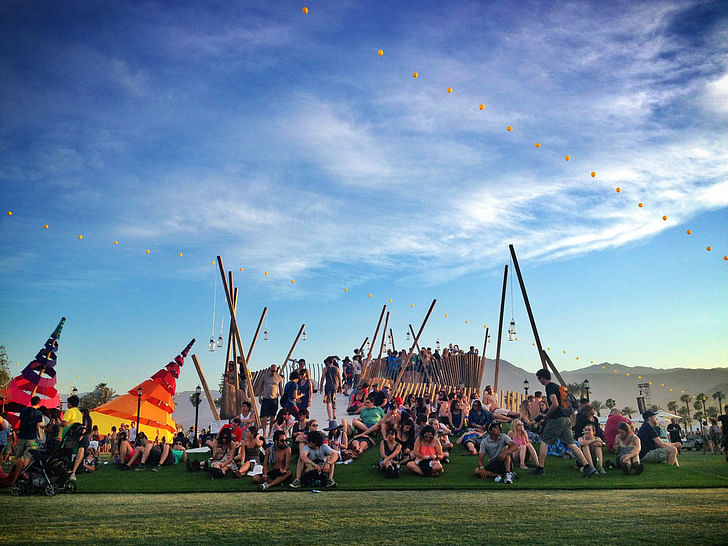
The Sidewalk's End is a project about experience. How can art be inextricably linked to the landscape to enhance the experience of the physical place? In an environment over-saturated with stimuli, what are the fundamental kinds of human experience that are lacking? And how can the act of producing public art at this scale be a meaningful experience for everyone who contributes? The Flux Foundation, an Oakland based organization dedicated to producing large scale public art via a collaborative process, proposed an answer to these questions by creating a place where the sidewalk ends.
The landscape of The Empire Polo Fields is a flat, horizontal expanse of grass. By disrupting this ground plane, the installation creates conditions of high and low, above and below, near and far, flat and sloped, all of which are conditions that could not be experienced here otherwise.

A clean, grassy slope on which to lie down. A tunnel to explore. A look out twelve feet up in the air. A semi-enclosed outdoor room cooled by misters. A place to meet. A place to sit. This is the essence of The Sidewalk’s End. These are the details which give texture to the overall Coachella experience.
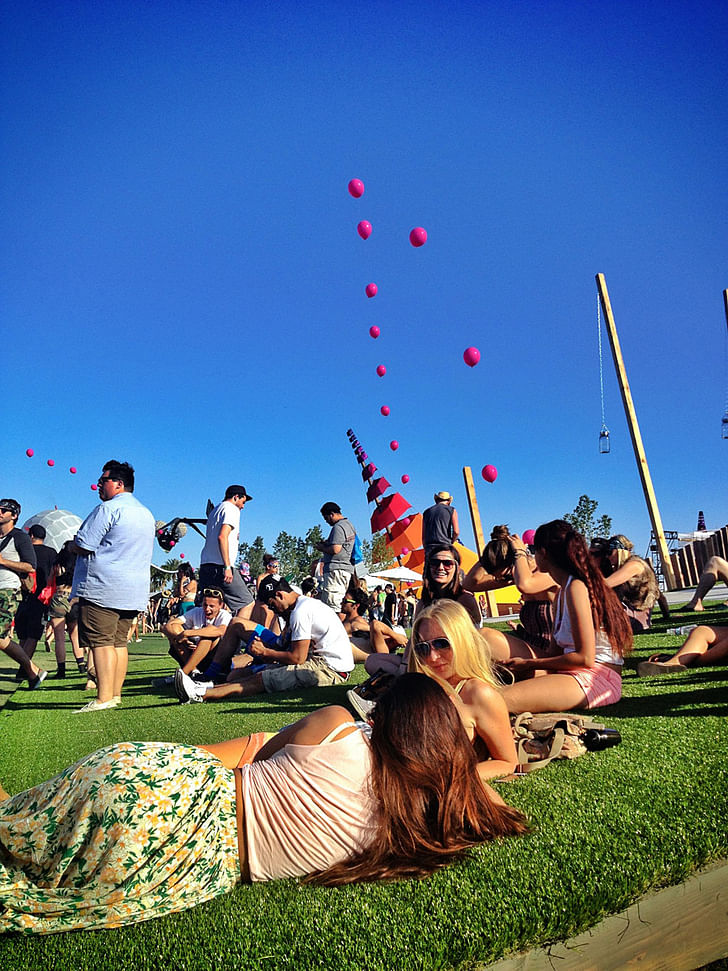
To learn more about the project I spoke with team members Ali Jeevanjee and Ben Anderson...
Inspired by Shel Silverstein’s poem, “Where the Sidewalk Ends”
How did you get the opportunity to build this installation at Coachella?
The FLUX Foundation is a nonprofit arts organization based in Oakland, CA, formed in 2010 when its founders were commissioned by Burning Man to build The Temple (Temple of Flux) for their annual arts festival. Its mission is to engage people in designing and building large-scale public art as a catalyst for education, collaboration and empowerment. The Temple of Flux was built with a team of over 250 people over 4 months with a budget of $180,000 dollars, and was widely recognized for its success by a range of publications, including Architect Magazine. Through the creation of this first work, FLUX established itself as a new model for the exploration of large-scale art, providing opportunities at every step in the art-making process for people to work together to create something monumental.
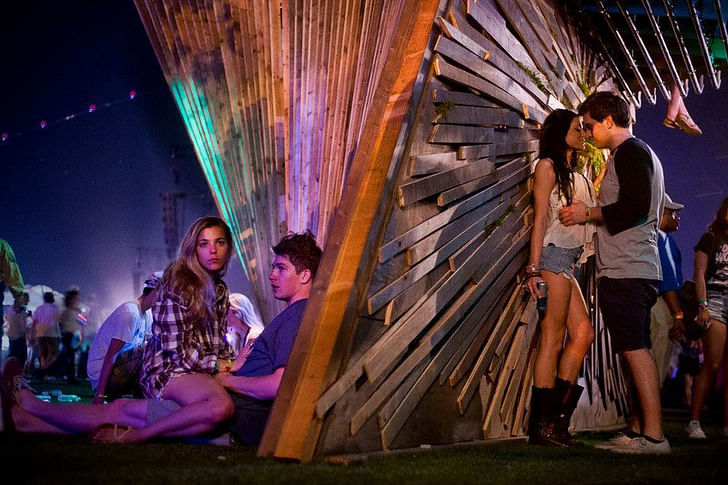
In the years since, FLUX has continued to create interactive works focused on placemaking and audience engagement, including Spire of Wishes (2010), BrollyFlock! (2011), Colony (2012), TweetHausOAK (2012) & Zoa (2012). At the end of 2012, FLUX was invited to submit a proposal to the 2013 Coachella Valley Music and Arts Festival. Inspired by Shel Silverstein’s poem, “Where the Sidewalk Ends,” we proposed The Sidewalk's End. It was chosen among over 300 art proposals submitted to the festival committee and was awarded a grant.

How was it fabricated? Onsite or offsite?
FLUX has a shop space in West Oakland at a premier industrial arts complex called American Steel Studios. The design and fabrication of the Sidewalk took place in our shop over the course of about two months. We prefabricated nearly all of the components and assembled as much of the structure as our space would allow. Teams worked collaboratively to design various elements of the sculpture and prototype different systems in shop. We had 6 core teams on this project: design & engineering; wood fabrication, metal fabrication; electronics & lighting; misting system; and project & budget management. We were limited in our time on-site at Coachella; with 5 days for installation, we wanted to arrive with as many pre-built and tested elements as possible to be confident that the piece would come together as quickly as possible. A group of about 30 people worked to create The Sidewalk in Oakland, and about 20 people helped bring it to life at Coachella.
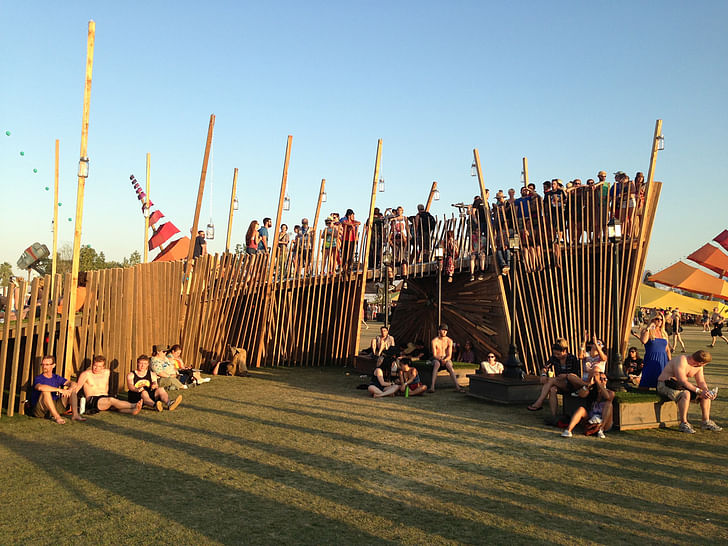
Considering the heavy loads, how did you engineer the structure for safety?
Nate Williams of Mosswood Engineering donated his services to ensure that the project could support a live load of 130 psf. This was achieved by using a series of parallel shear walls that allowed control of both the shape and slope of the project, as well as supporting the decking spanning in between and cantilevering at the high point. We counted over 275 people on the project during the Red Hot Chili Peppers performance, and there was no noticeable movement or deflection.
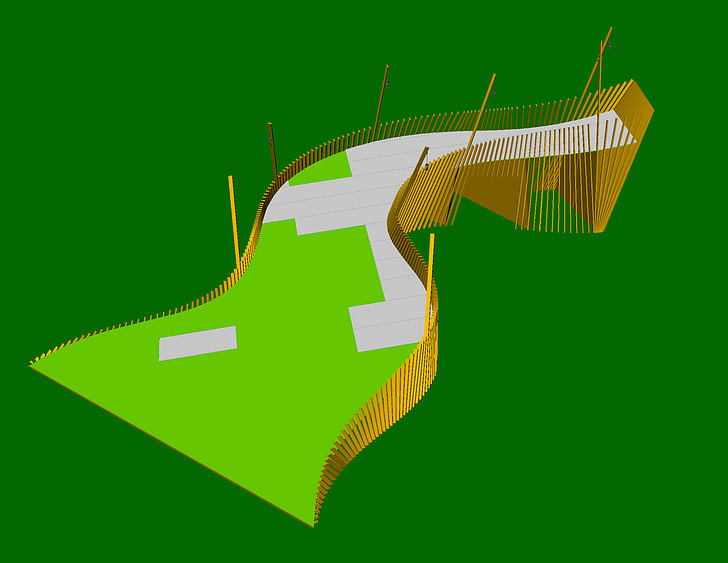
Did the crowds use it as you expected?
The crowds responded to the piece even better than we could have imagined. Just as we had hoped, using Dolores Park in San Francisco as an inspiration, participants used it like a promenade and a park, lounging in the sun on its slope, eating, chatting and getting some respite from the bustle of the festival. Positioned perfectly between the Main Stage and the Outdoor Stage, The Sidewalk provided commanding views of the best shows and became a landmark providing a meeting point for festival goers.

Ideally, we would like to create the system of activations on the underside of the sculpture that we originally proposed. The Sidewalk was intended to be an experience both above and below ground
During the day, people rolled down the grassy slope and drew pictures and games of hopscotch and tic-tac-toe with sidewalk chalk. They stuck their legs through the metal railings and swung their feet to the music as they took in the festival atmosphere. They looked through periscopes along the railings expecting to get a magnified view of a rock star but instead discovered the wacky refracted light and color of a kaleidoscope. An outdoor room framed by the curves of the piece and outfitted with benches and misters became a refuge from the heat of the sun and key gathering points to enjoy the show slightly removed from the crowd.
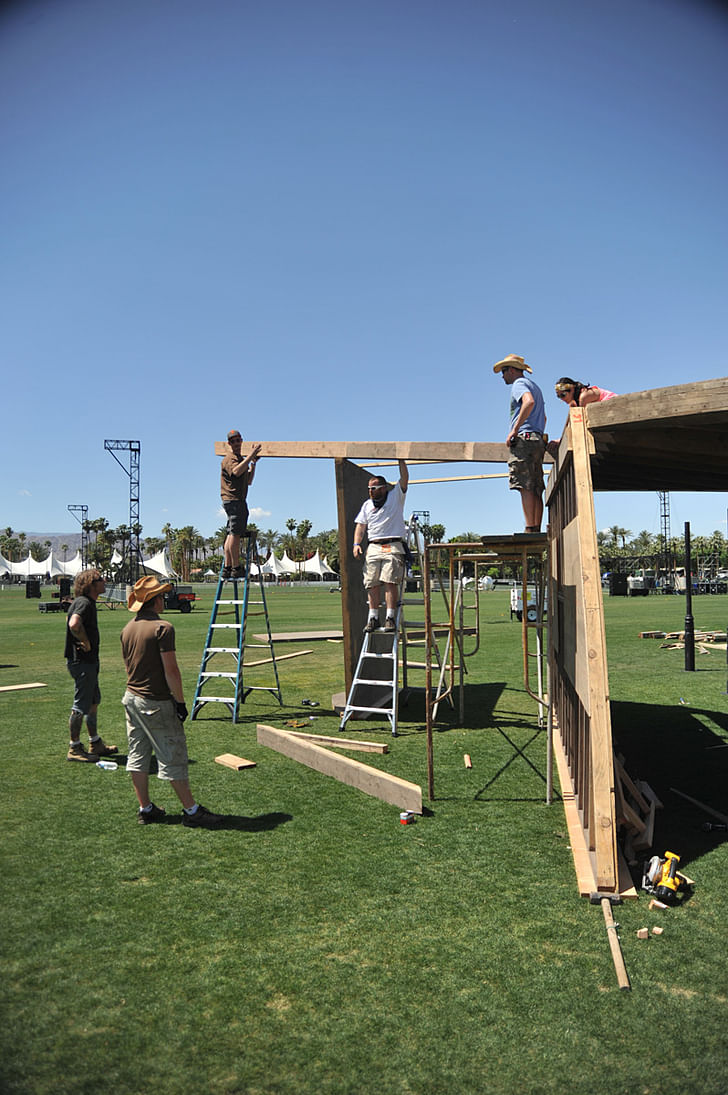
All of these elements imbued The Sidewalk with the feeling of memory and exploration, and acted as a natural gathering space for festival participants, exactly the ideas that inspired the piece from its inception.

Now that the event is over are there any changes you would make to the installation?
Ideally, we would like to create the system of activations on the underside of the sculpture that we originally proposed. The Sidewalk was intended to be an experience both above and below ground; given the opportunity to show it again, we would relish the chance to create interactive systems of water and light underneath the sidewalk and build on our existing interactive arduino-controlled LED system.

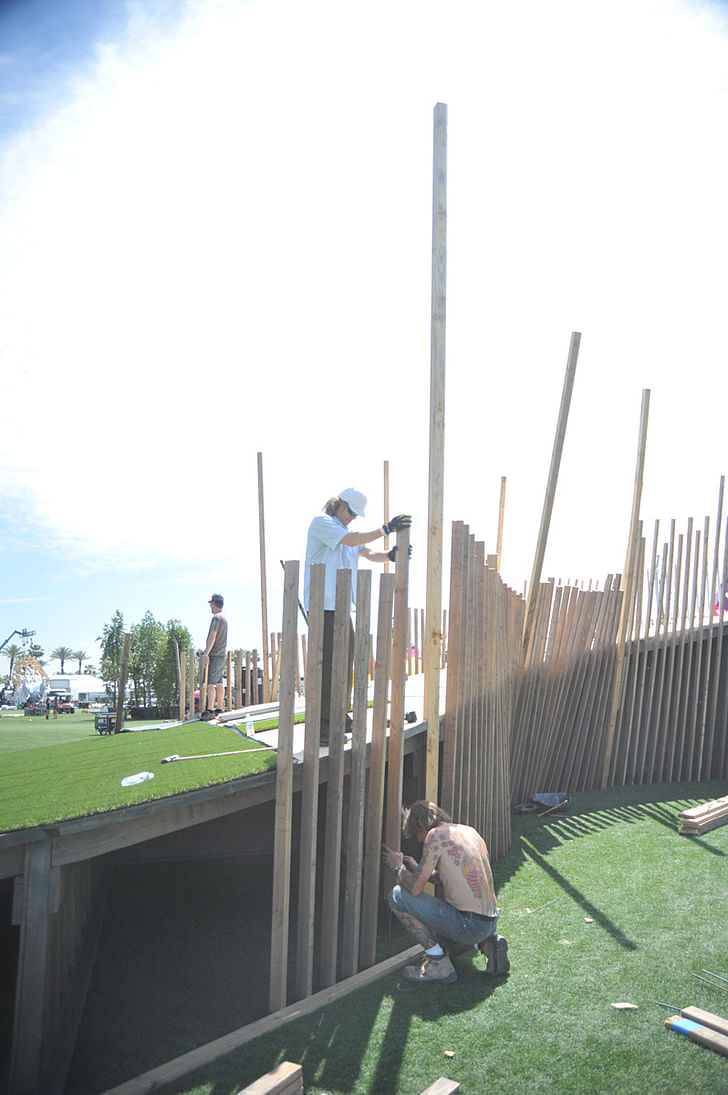
Is this a single-use piece, or will the Sidewalk live again elsewhere?
The Sidewalk's End was carefully dismantled and stored with the intention of reuse. FLUX is currently seeking opportunities to reinstall this piece in a meaningful site-specific way.

The Flux Foundation is a 501(c)(3) organization dedicated to utilizing a collaborative process to produce large scale public art. Collaborators bring a wide range of skills and interests with which to contribute. The process and experience of building is as fundamental as the finished product. Building art builds community.
Project Team
Jess Hobbs, Art Director
Ben Anderson, Art Director
Ali Jeevanjee, Design Lead
Craig Maldonado, Design Lead
Catie Magee, Project Director
Becky Neil, Project Manager
Jonny Poynton, Carpentry Lead
Max Poynton, Carpentry Lead
Thwen Chaloemtiarana, Metal Lead
Paul Petrunia is the founder and director of Archinect, a (mostly) online publication/resource founded in 1997 to establish a more connected community of architects, students, designers and fans of the designed environment. Outside of managing his growing team of writers, editors, designers and ...
No Comments
Block this user
Are you sure you want to block this user and hide all related comments throughout the site?
Archinect
This is your first comment on Archinect. Your comment will be visible once approved.